Tucked along the Adriatic coast, Montenegro is one of Europe’s best-kept secrets – a compact country where mountains tumble straight into turquoise seas, and medieval towns glow golden at sunset. Known for its dramatic fjord-like Bay of Kotor, lively beaches of Budva, and charming stone villages like Perast, Montenegro offers both relaxation and adventure in equal measure. Here, you can sip local wine in a centuries-old square, hike fortress walls with sweeping views, or unwind on a quiet cove all in the same day. Small in size but big in beauty, Montenegro is a destination that lingers long after you leave.
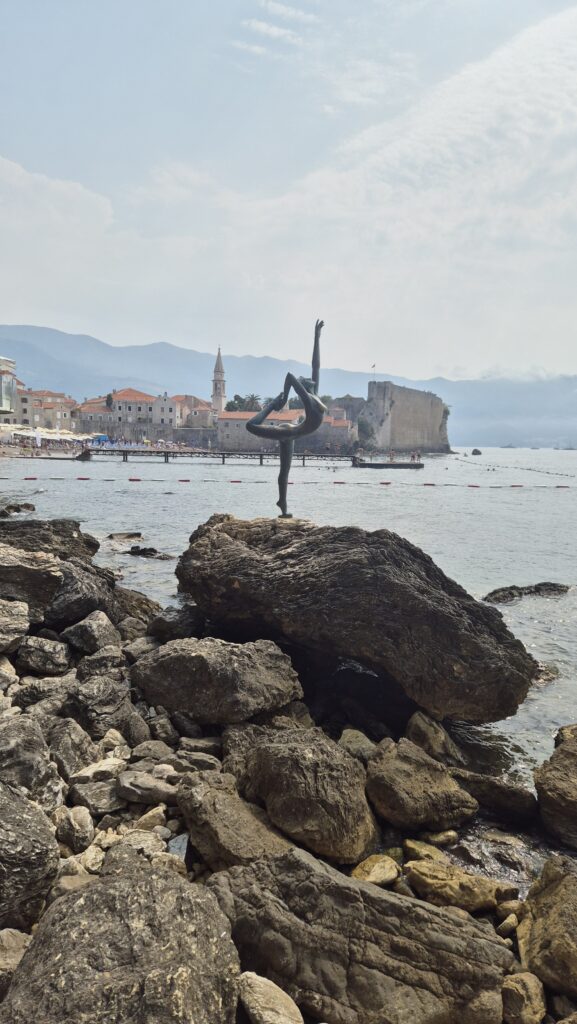
Budva – the picturesque coastal town
If you’re after a trip that pairs medieval lanes with crystalline water, lively cafés with quiet beaches, and an old-world vibe that still knows how to pour a very good glass of wine – Montenegro, and specifically Budva and Kotor, will steal your heart. We spent two days soaking up Budva’s sun-soaked old town and beachfront, and two days exploring the dramatic fjord-like Bay of Kotor and hiking its iconic fortress walls. Below is a full, sensory write-up of the trip – walking tours, food and bar picks, hotel suggestions for every budget, the famous Kotor climb (yes, the steps), and the speedboat outing that feels like a day on a postcard.
Day 1 – Budva: arrival, the old town, wine and gelato evenings
We arrived in Budva and the first thing that hit us was how tiled rooftops and a compact medieval grid meet a bright Adriatic horizon. We stayed at Avala Resort & Villas, a waterfront hotel that nestles practically at the old town’s steps, with an infinity pool that looks straight out over the harbour, perfect for an afternoon dip after travel and a lazy poolside cocktail. The hotel has indoor and outdoor pools and an excellent location literally a few steps from the old town and the main promenade.
After checking in and rinsing off the journey, we wandered into Budva’s Old Town. This place is small and perfectly formed: narrow, cobbled lanes, tiny squares hemmed by pastel buildings, tiny churches that pop at the end of alleys, and a citadel that watches over everything. We spent our first evening doing what we’d come to do all trip: sit, watch the world, have wine, and eat really good food.
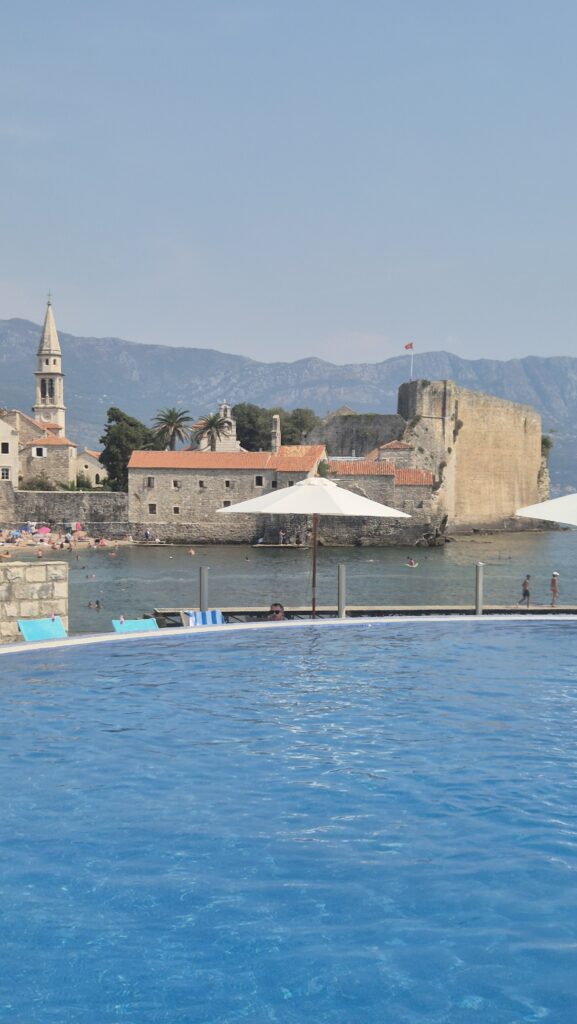
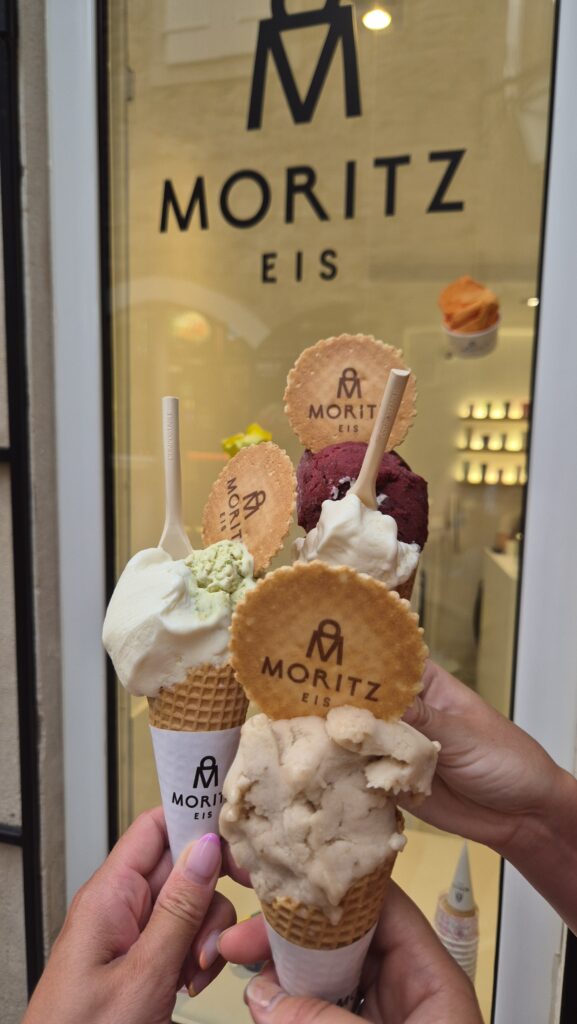
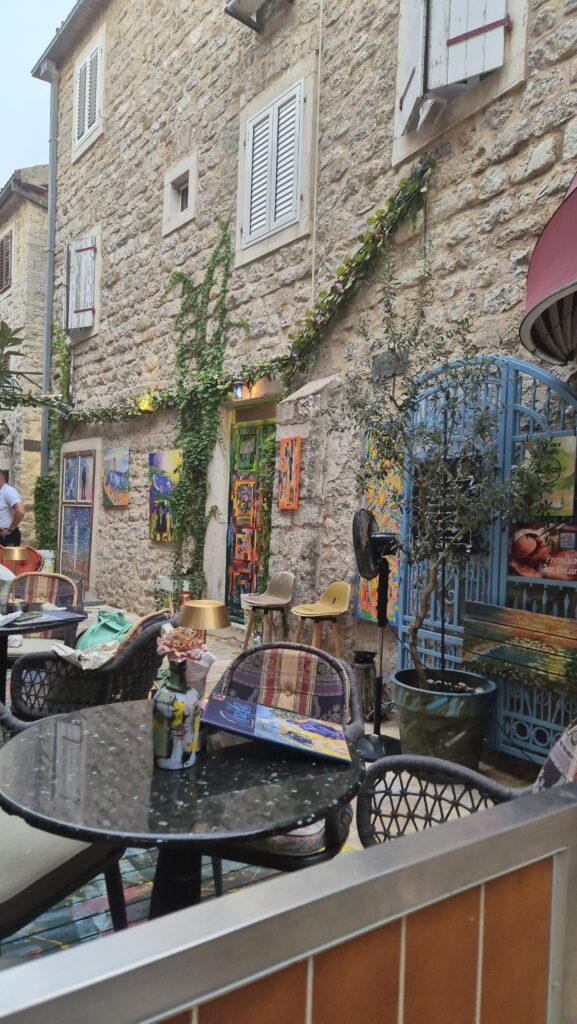
Budva Old Town walking tour – the must-stops
If you only have a couple of hours, here are the stops that give you the soul of Budva Old Town – easy to do as a loop:
- Town Gates / Northern Entrance – step from the waterfront into the labyrinth.
- Square of the Old Town (Trg) – a small plaza where life slows, cafés cluster and people-watchers gather.
- Church of St. Ivan (Crkva Sv. Ivana) – a pretty small medieval church tucked in the lanes.
- The Citadel (Budva Citadel) – climb the ramparts for a few aerial views over the roofs and sea. There are small museum exhibits inside.
- Pizana and small artisan lanes – aimless wandering here yields boutiques, galleries and gelato shops.
- Budva Marina & Promenade – stroll back toward the water and the line of seafood restaurants.
- Mogren Beach & the Ballerina statue – a short walk past the promenade takes you toward Mogren; the bronze “dancing girl/ballerina” statue perched on a rock is an iconic photo stop.
We ended the night at a tiny table in a square, ordering a local red, Montenegro does a surprisingly good dry red, and sampling plates of octopus, grilled fish and local cheeses. Gelato shops are everywhere; we became unofficial afternoon gelato inspectors, trying many flavours (fig and honey were highlights). If you want to just sit with a coffee, wine or scoop and watch a sunset, pick any café that faces the narrow lanes or the sea, the feel is intimate, unhurried and very friendly.
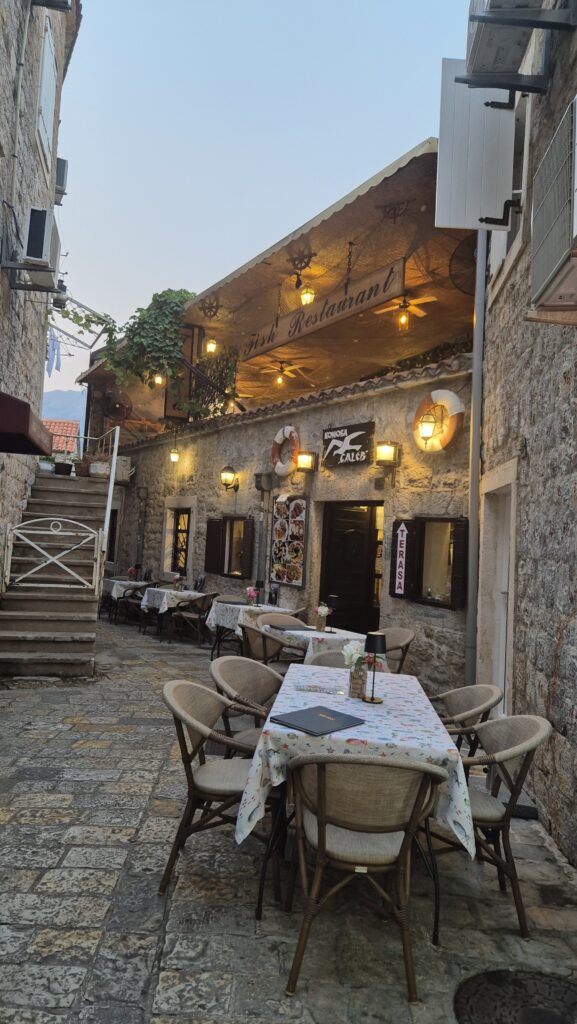
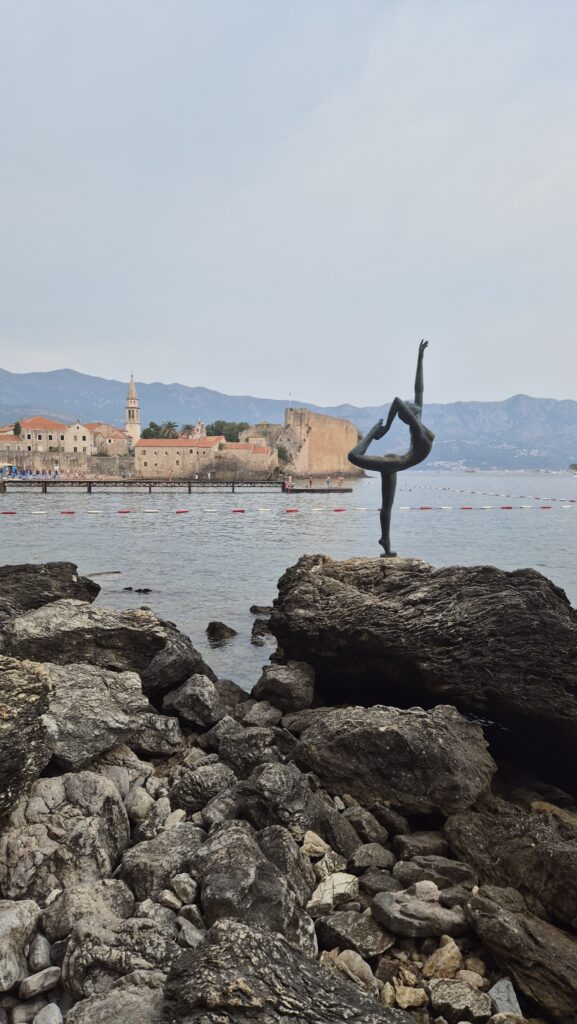
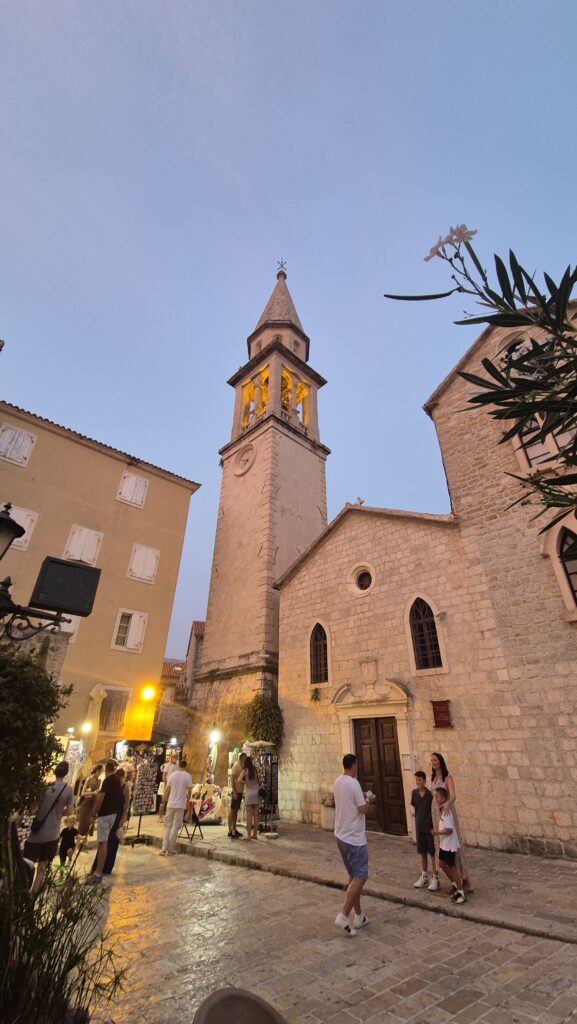
Bar & restaurant picks in Budva (our favourites)
- For seafood with a view: Waterfront restaurants near the marina (look for outdoor terraces). They’re touristy but the fish is fresh and the ambience is unbeatable.
- For wine & small plates: Seek the tiny enotecas tucked into the lanes – simple, with good local wine lists and small platters.
- For casual beachside bites: Cafés along Slovenska Plaža (the main promenade) are great for late-afternoon grazing.
- For cocktails and a lively vibe: Promenade bars close to the old town. (We found a few with good sunset-facing terraces.)
Recommendations are based on wandering, local suggestions and the cluster of well-rated places around the marina and square.
Day 2 – Pool, beaches and the ballerina statue
We treated day two like a slow Sunday. Avala’s pools were a magnet: afternoon lounging, a book, the salt-and-pine scented breeze and the poolside menu keeping us sustained. The hotel has multiple pools, including an infinity pool that is ideal for late-afternoon sunning with a sea view. If your room faces the water, the sound of the boats in the harbour becomes the evening soundtrack.
Later we took a promenade walk past the famous Ballerina statue, the bronze figure poised on a rock near the shore, and then sat for a while on the rocks and the beach. It’s one of those small, cinematic touches of Budva: a sculpture, people swimming around it, the light turning gold. There are plenty of beaches nearby, Mogren is the obvious Old Town-adjacent choice; Slovenska Plaza is the buzzing main beach with cafés and loungers.

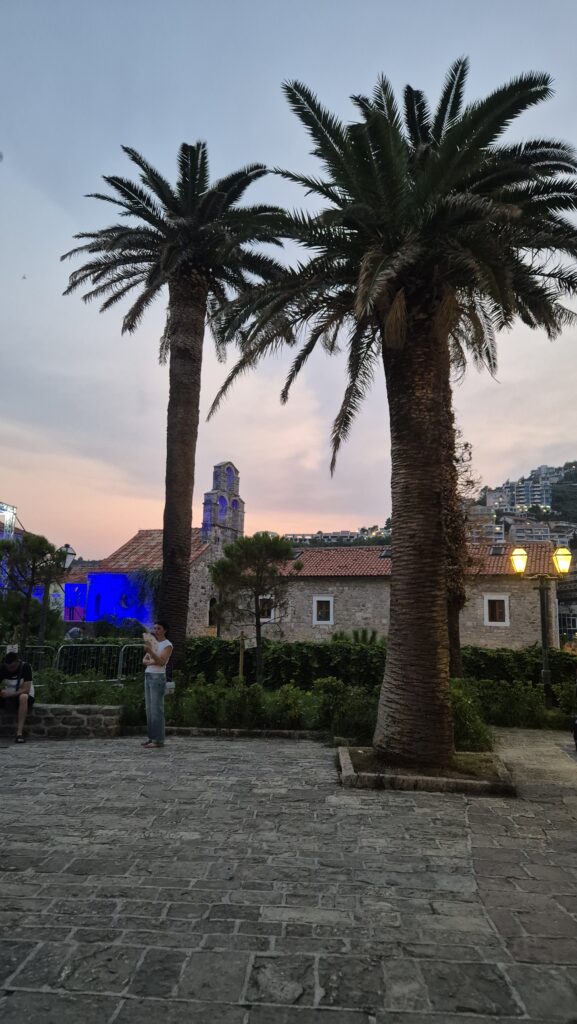
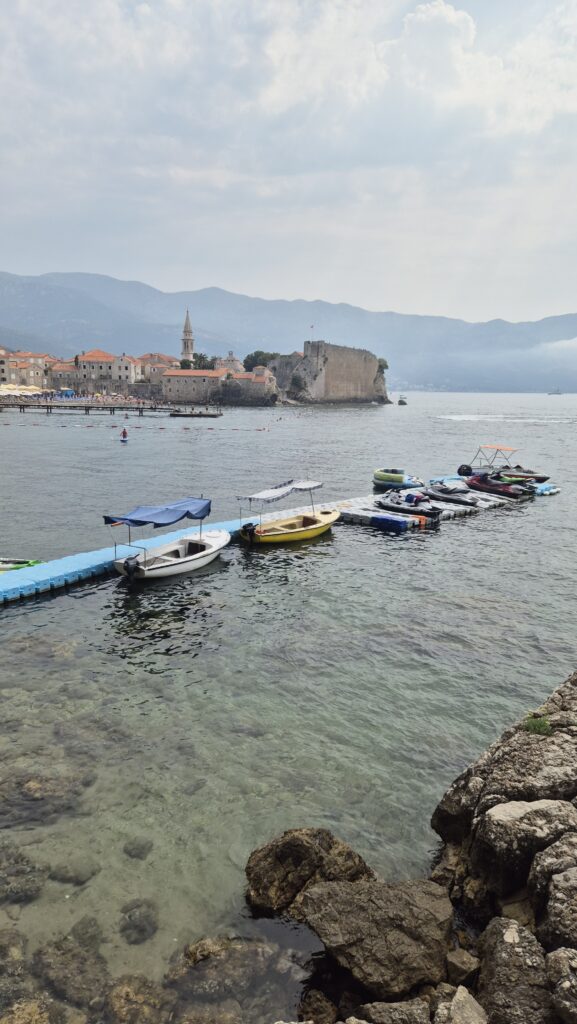
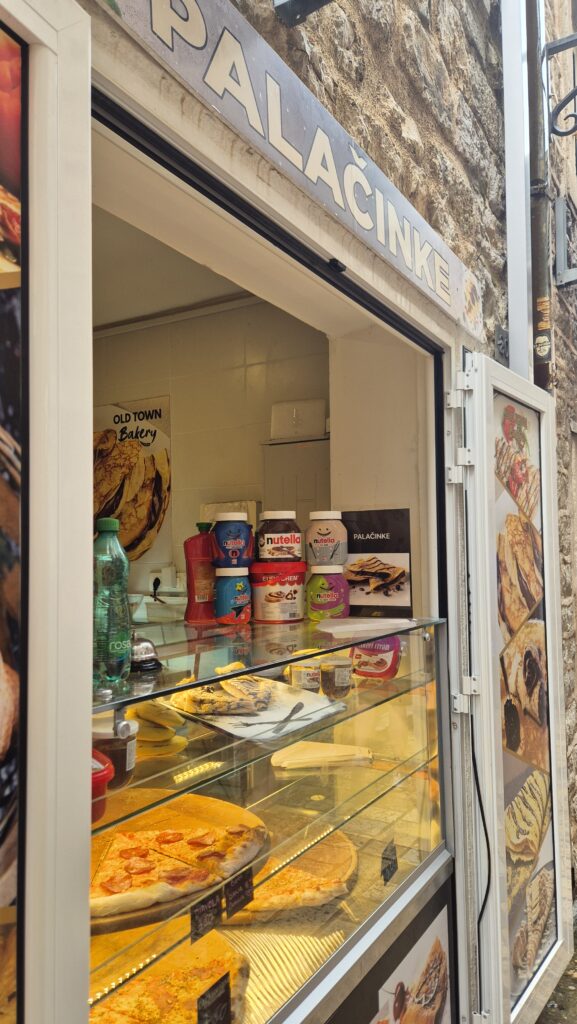
More Budva walking-tour highlights (for the energetic)
- Mogren Beach (two-pebble coves connected by a short tunnel) – a favourite for photos and a fairly sheltered swim.
- Slovenska Plaza – long, lively, lined with cafés; great for people-watching.
- Small galleries and artisan shops within the Old Town – bring cash for local ceramics and textiles.
Where to sleep in Budva – hotels for every budget
We stayed at Avala Resort & Villas and loved the location (it’s practically on the Old Town steps), the sea views and the pools. If you’re planning budgets, here’s a practical breakdown with realistic nightly ranges (season and availability affect prices — summer high season is pricier). Sources below reflect current booking platforms and market averages.
- Luxury (approx. €180–€350+/night in high season)
- Splendid Conference & Spa Resort (nearby, large resort with spa and pools) – a true resort experience.
- Mid-range (approx. €70–€150/night)
- Avala Resort & Villas – excellent location and pools; a comfortable mid-upscale pick. Other mid-range hotels along the promenade also fall here.
- Budget (approx. €25–€70/night)
- Pension-style guesthouses, hostels or small B&Bs in and around Budva – plenty of options if you don’t need a big resort. Booking platforms and aggregators show cheap rooms especially outside peak weeks.
Tip: Budva’s summer high season (July–August) pushes prices up; if you travel shoulder season (May/June or September), you’ll see much better value.
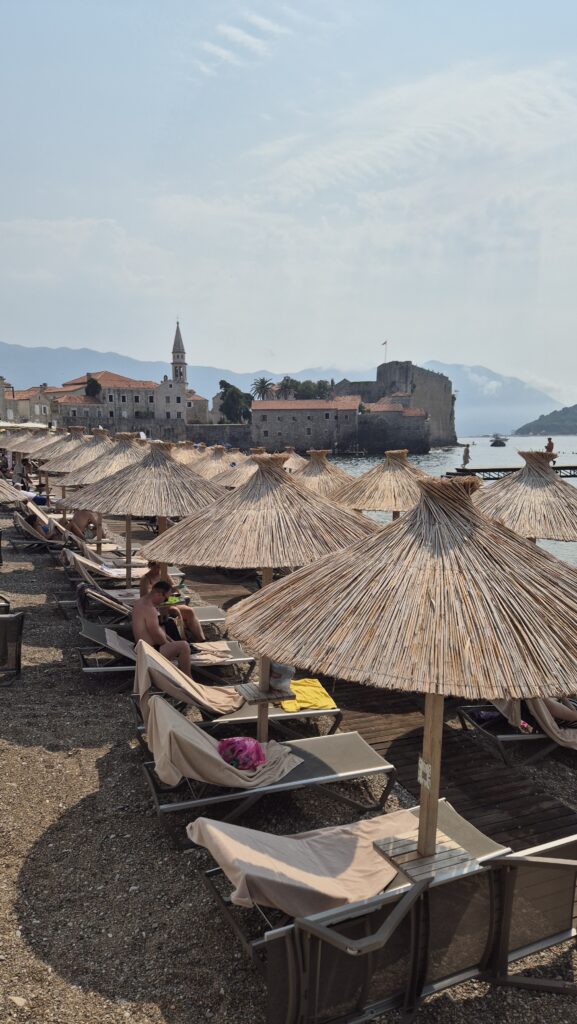

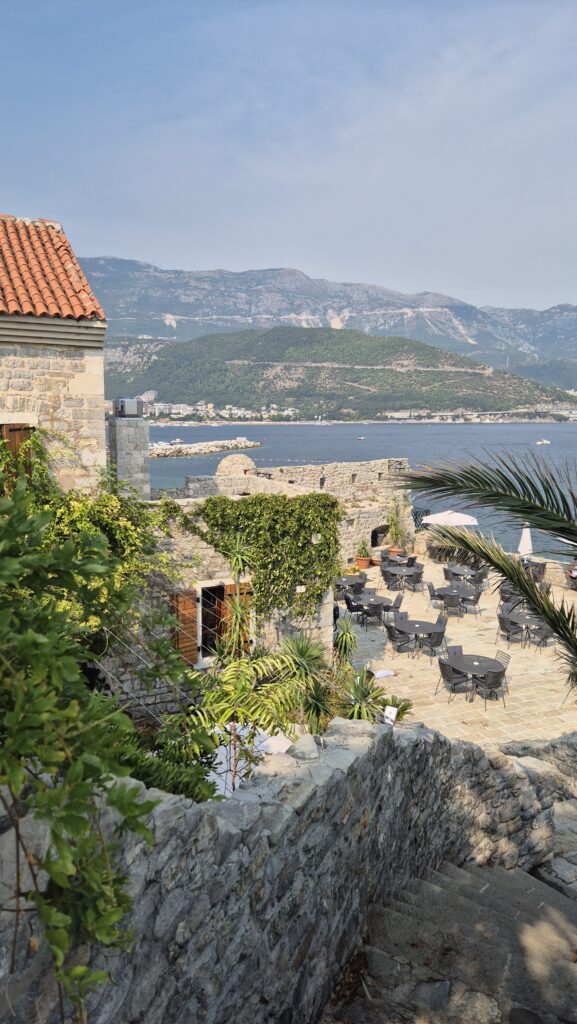
Day 3 – Transfer to Kotor, speedboat day and a seaside evening
We left Budva in the morning and headed for Kotor, the jewel of the bay. Kotor Old Town is a UNESCO-protected walled city that feels like stepping into a medieval set: stone streets, churches, palaces and a very dramatic backdrop of steep, green hills plunging into the bay.
One of the highlights of our trip was a speedboat tour of Boka Bay. It’s the best way to understand the scale of the bay and its mix of history, legends, and natural beauty. Our first stop was Perast, a tiny baroque town of palaces and churches where time seems to stand still. Just across the water sits Our Lady of the Rocks, a small man-made island crowned with a church, built on a foundation of sunken ships and stones dropped by generations of sailors.
From there, the boat pushed farther out into the Adriatic and into something unexpected — the Submarine Cave. Once used by the Yugoslav navy as a hidden submarine base, this natural grotto swallows boats whole. Gliding inside was a surreal experience: cool air, echoing drips, and the thought of massive submarines once slipping in silently to disappear from view.
The Magnificent Blue Cave
The trip didn’t stop there. We carried on to the shimmering Blue Cave, where the water glows an unreal electric blue. Jumping in for a swim felt like diving into a living jewel box — cold, salty, and exhilarating. Many tours include a swim stop here, and it was easily one of the most unforgettable parts of our journey.
Cruising back through the bay as the late afternoon sun lit up the cliffs, we passed fortresses and tiny coastal villages, each framed against the dramatic slopes that make the Bay of Kotor so unique. Back in town, we settled into the Old Town’s rhythms: narrow lanes filling with music, café tables spilling into squares, and the sense that we’d arrived somewhere both ancient and alive.
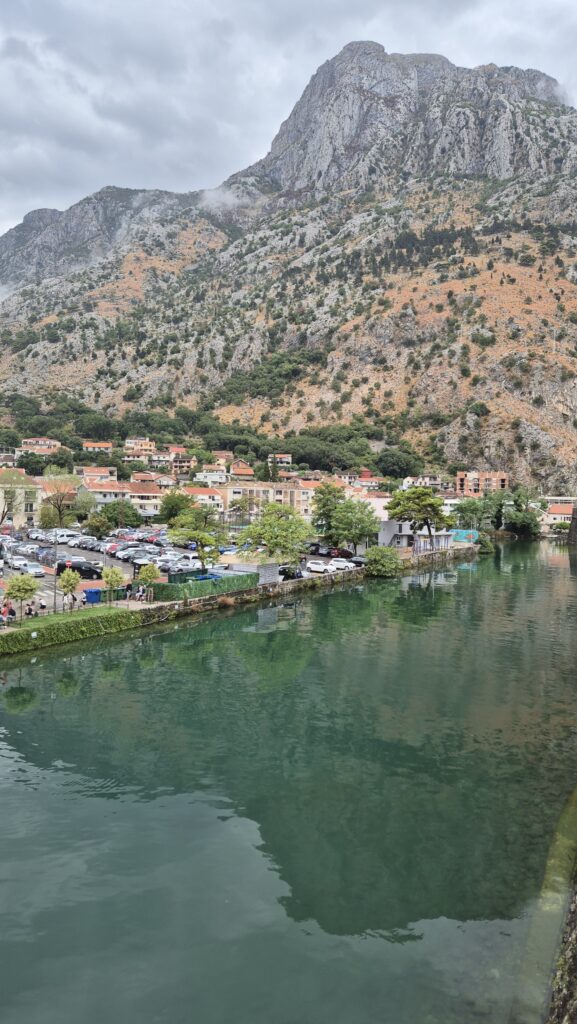
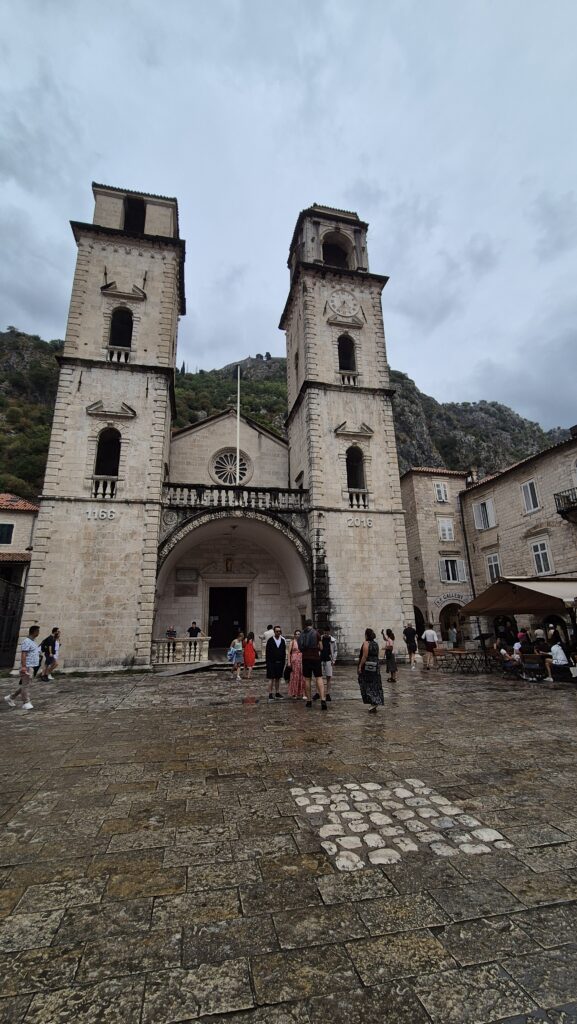
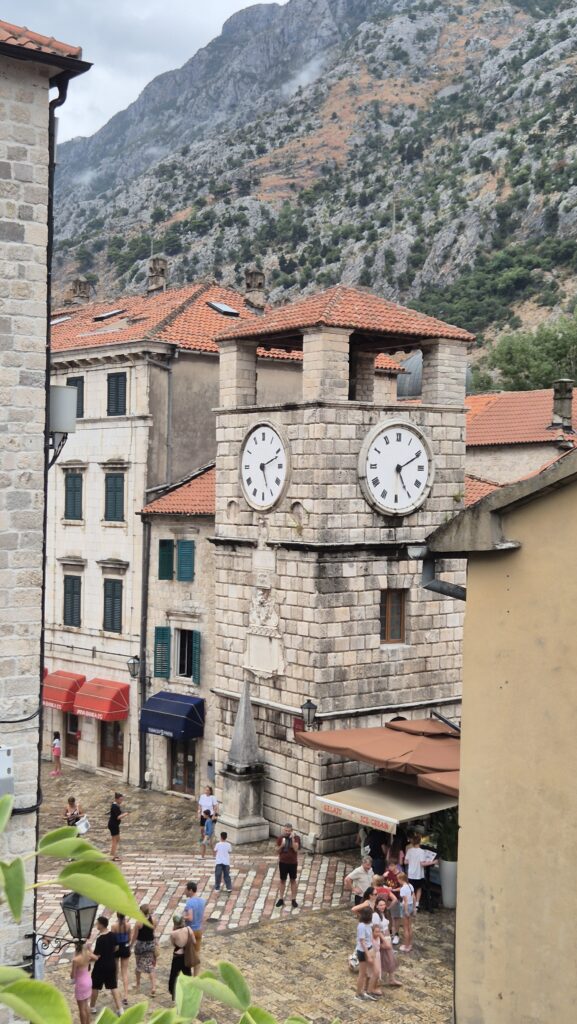
Speedboat trip — where it goes
Common highlights on the Boka Bay speedboat loops:
- Perast – small, elegant, with baroque palaces and narrow streets.
- Our Lady of the Rocks (Gospa od Škrpjela) – a tiny artificial island with a church and a museum; quick visit possible.
- Blue Cave / swim stops – some tours include swimming in sea caves or at sheltered coves.
- Panoramic bay cruising – the sheer cliffs, scattered islets and fortified towns make the ride endlessly scenic. Tour lengths vary; common formats are 2–4 hours.
Our Kotor base – Hippocampus Boutique Hotel
We stayed at the Hippocampus Boutique Hotel, a tucked-away gem inside Kotor Old Town. It’s a boutique, intimate place with a rooftop terrace that faces the fortress walls, the perfect spot for a morning coffee or a late-night digestif as the town quiets. The hotel has a small, warm feel, modern rooms and is literally within the old stone lanes. If you want to wake up and be strolling the squares within moments, this is the spot.
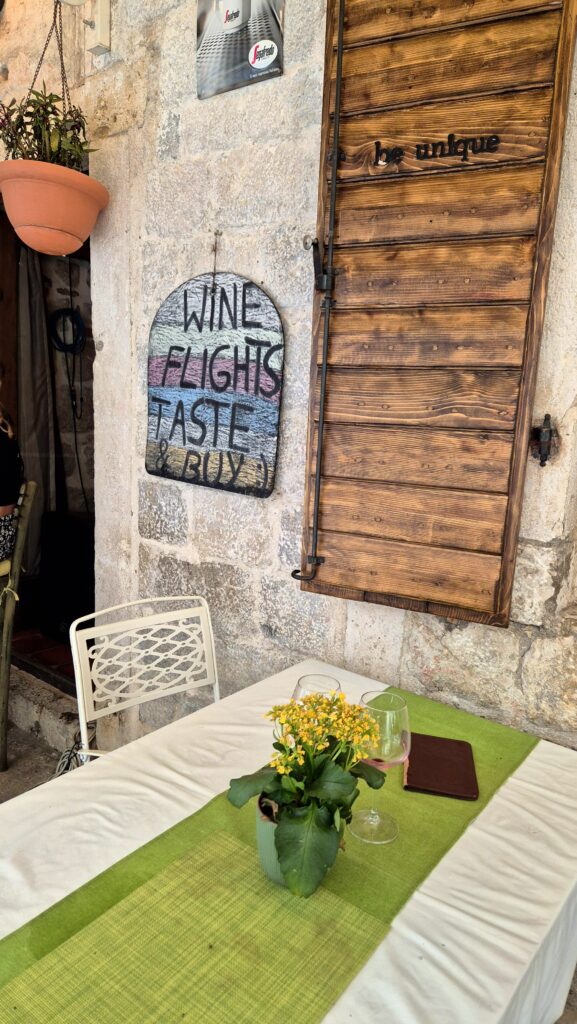
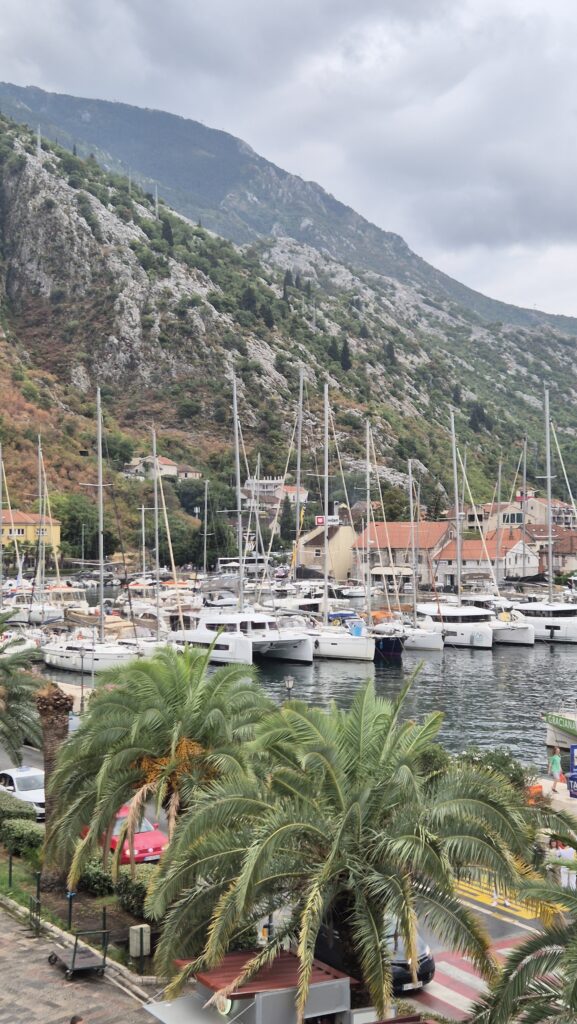
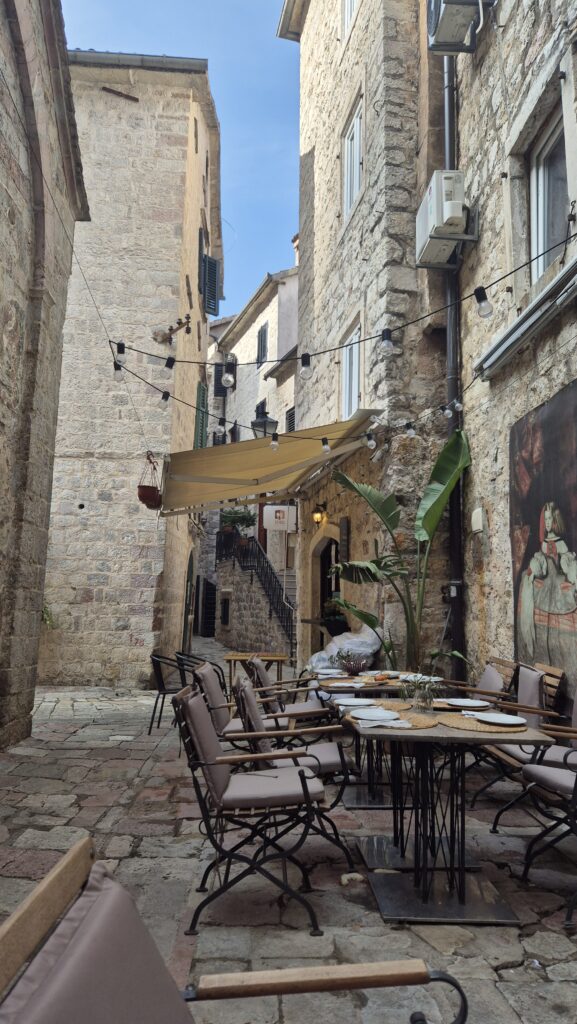
Day 4 – The Kotor walking tour and the climb to the fortress
Kotor rewards aimless wandering but also a structured exploration. The Old Town walking loop is compact, and a guide or a good map will point you to the details, palaces, churches and hidden viewpoints. Our walking tour stops included:
- The Sea Gate (main entrance) – start here and step into the centuries.
- Clock Tower & Square of the Arms – the central plaza with the clock tower and lively cafés.
- St. Tryphon Cathedral (Kotor Cathedral) – Romanesque-Gothic, with notable frescoes and carved details.
- Pima Palace, Buca Palace and other palaces – small noble houses that tell the town’s merchant history.
- Maritime Museum – if you’re into naval history, it’s a compact but informative detour.
- Northern Gate / other gates – the fortifications are all around, reminders of Kotor’s strategic past.
The climb to San Giovanni (Kotor Fortress) – the steps, route and what to expect
One of Kotor’s signature experiences is hiking the ancient walls up to St. John’s Fortress (the fortress above the old town). Guides, local signage and hiking write-ups agree on the numbers: the climb is steep, with around 1,350 steps from the Old Town to the top, and it usually takes 45 minutes to an hour, depending on pace and rest stops. The route is a zig-zag path along the fortification walls; along the way you’ll pass the Church of Our Lady of Remedy and several viewpoint terraces.
The top delivers an unbelievably cinematic panorama of the walled town tucked into the bay, ringed by towering emerald slopes. Bring water, good shoes, sun protection, and plan a slow descent, the stairs are old and uneven in places. There’s often a small entrance fee to access the path.
Practical notes: start early to avoid midday heat and the crowds; there are resting ledges and small shrines along the way. The top is a photographer’s dream at golden hour, but it’s also glorious early morning when the bay is glassy and still.
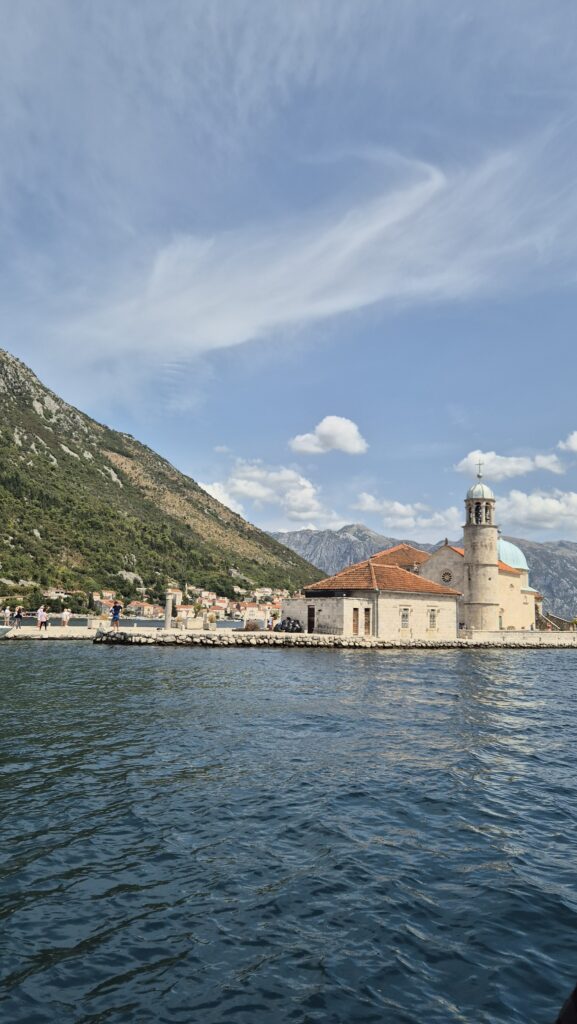
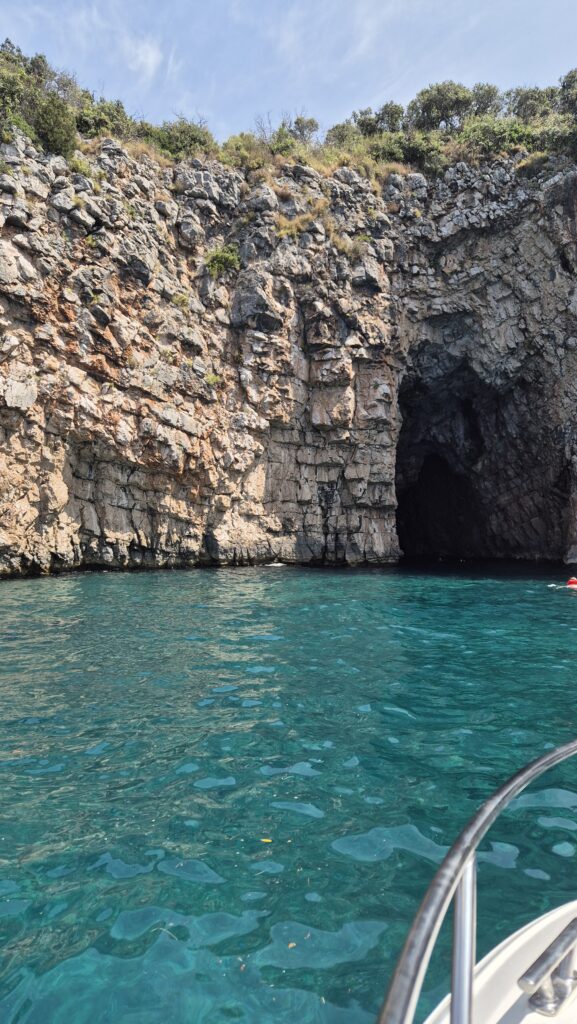
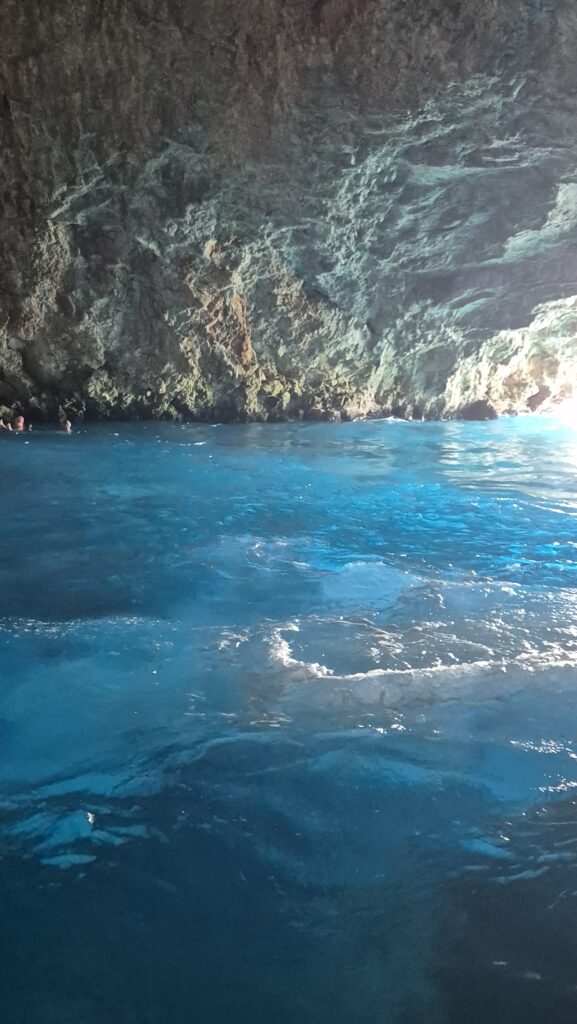
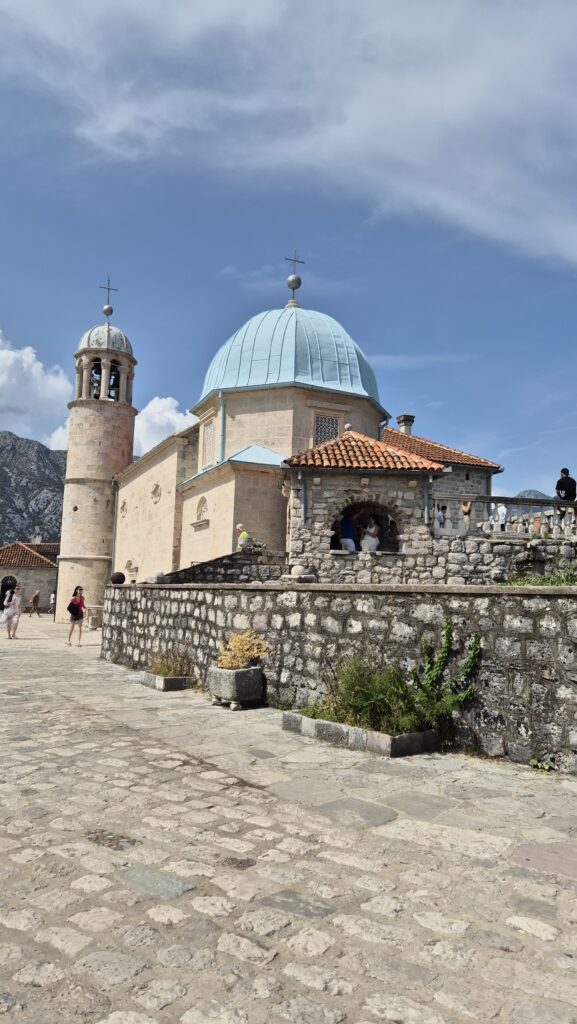
Kotor restaurants & bars – where we ate
Kotor’s culinary scene leans toward fresh seafood, strong espresso, and congenial wine lists. A few picks from our strolls and local recs:
- Casual seaside lunches: Small konobas (traditional taverns) around the marina – grilled fish, calamari and simple salads served with crusty bread.
- Better-date-night: Restaurants in the Old Town squares with terraces and local wines – try regional plates like black risotto (squid ink), grilled sea bass, and local lamb.
- Cafés for people-watching: The Square of the Arms is full of cafés where you can sit for hours with a macchiato.
- After-climb treat: A cold beer or lemonade back in the Old Town feels earned after the fortress hike.
Many of the boat tour operators also suggest lunch in Perast if your itinerary allows a longer stop there – a lovely, slightly quieter alternative to Kotor’s bustle.
Hotel options in Kotor – luxury, middle, budget
Kotor offers a wide range of stays from boutique splurges to wallet-friendly guesthouses. Current platform data shows clear tiers and seasonal variability; below are practical ranges and example types of properties based on recent listings and price aggregators. Expect higher prices in July–August.
- Luxury (approx. €180–€350+/night in high season)
- Huma Kotor Bay Hotel & Villas and similar 4–5 star properties with big views and spa-style services often populate this bracket.
- Mid-range (approx. €70–€160/night)
- Boutique Hotel Hippocampus (where we stayed) fits this category for a comfortable, central run – boutique rooms and a rooftop terrace. Many well-located 3–4 star hotels in the Old Town fall here.
- Budget (approx. €30–€90/night)
- Hostels, private rooms and family-run guesthouses- Booking and other aggregators show many options well below €100 if you’re flexible on room type.
Tip: staying inside the Old Town is charming but rooms can be small and more expensive; if you want space and slightly better rates, consider nearby bayside hotels or Tivat area resorts and a short drive in.
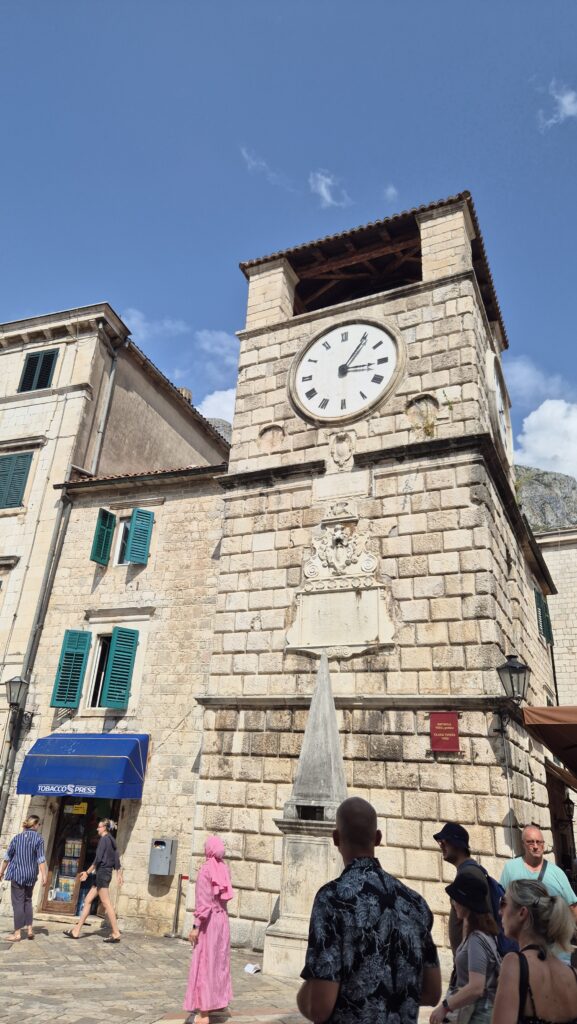
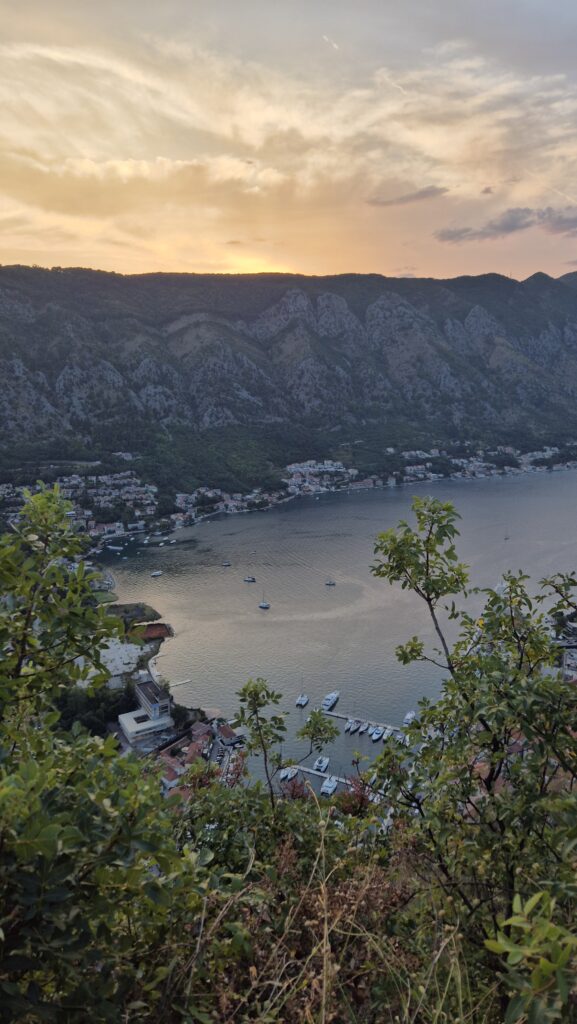
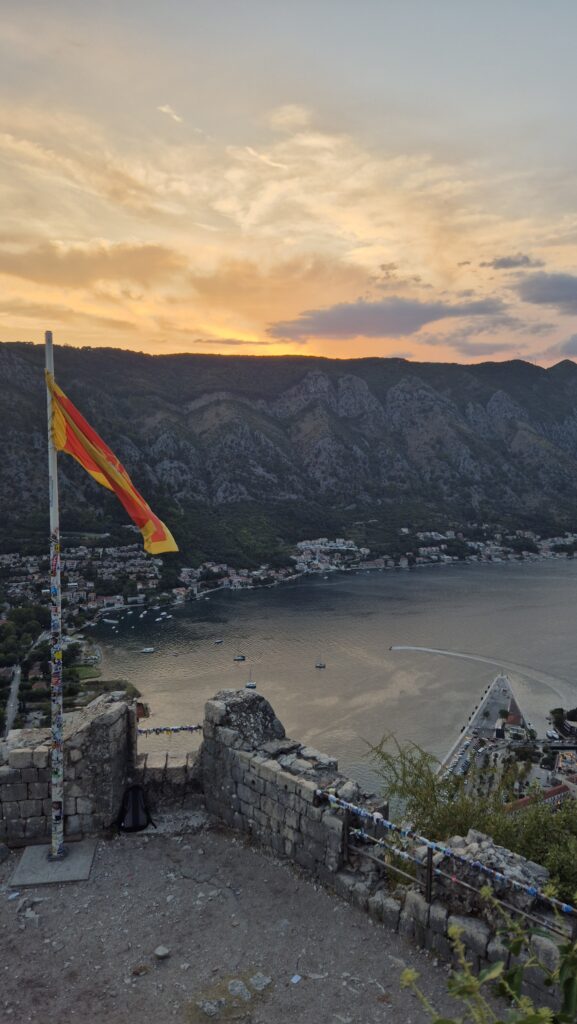
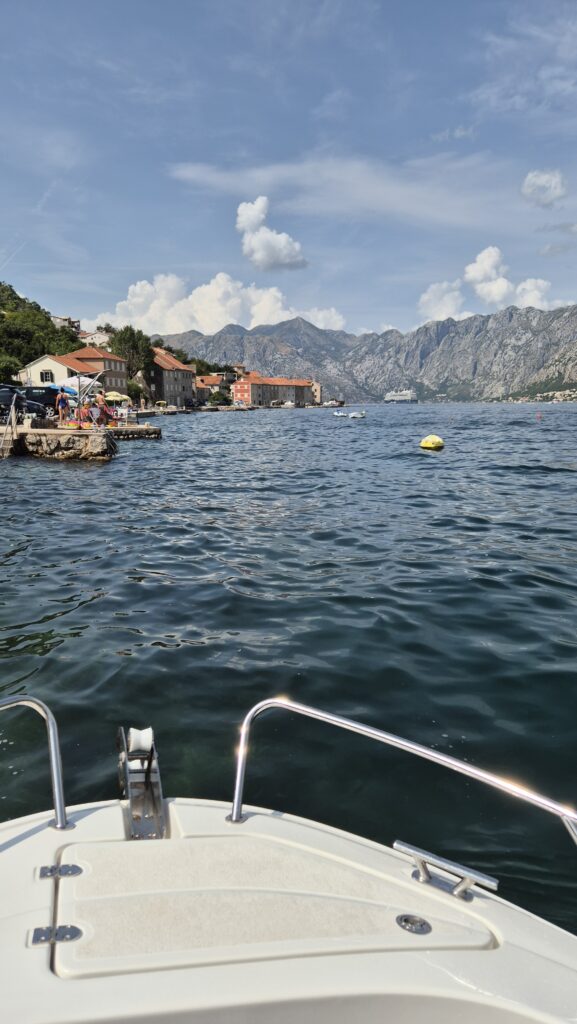
Final notes, tips & a few honest impressions
- Pack for stone streets: Bring comfortable walking shoes — both Budva and Kotor are best explored on foot over cobbles and steps.
- Hydrate on the Kotor climb: The 1,350-step ascent to San Giovanni is rewarding but demanding; start early, wear sunscreen and take the rest spots. There’s usually a small entrance fee to use the official trail.
- Book the speedboat if you can: It’s the fastest way to see Perast and Our Lady of the Rocks and feel the scale of the bay. Tours vary from quick 2-hour runs to longer full-day options that include Blue Cave swims. Check itineraries for exact stops.
- Budgeting: Summer high season drives hotel prices up considerably; mid-May/June and September are great shoulder months for better value. For nightly price estimates and current deals, major booking platforms and price aggregators offer live rates.
- Roads and Traffic: The traffic in Montenegro is poor, there seems to be one main road through Kotor and through Budva and traffic was always bad. Plan your journey well for getting to the airport! We used Booking.com taxis and they turned up perfectly on time and got us to the airport. Be aware that Tivat airport is small and chaotic. It was the busiest airport we have ever been to and they were not prepared for so many people in such a small space. People were queuing outside the airport building!
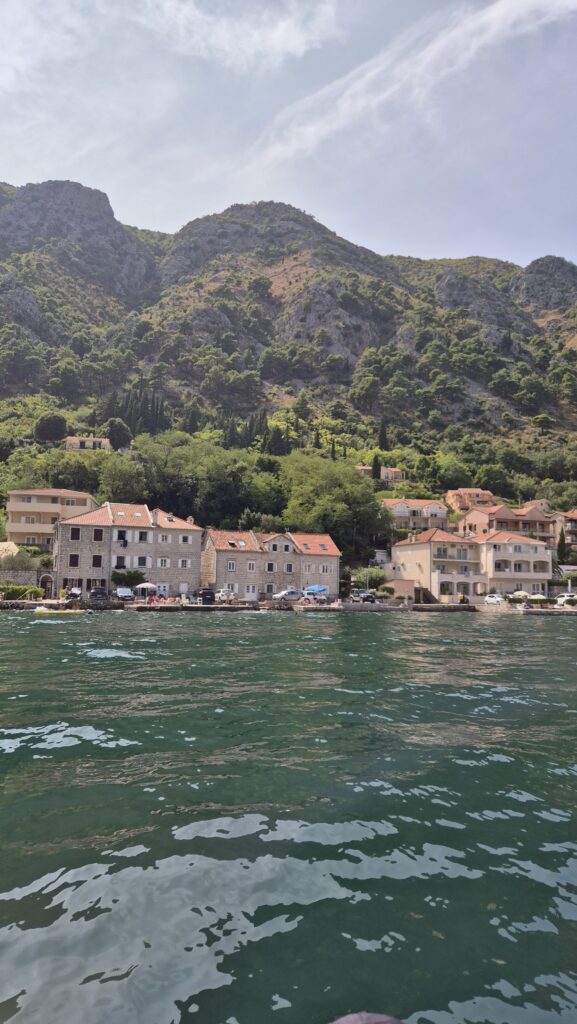
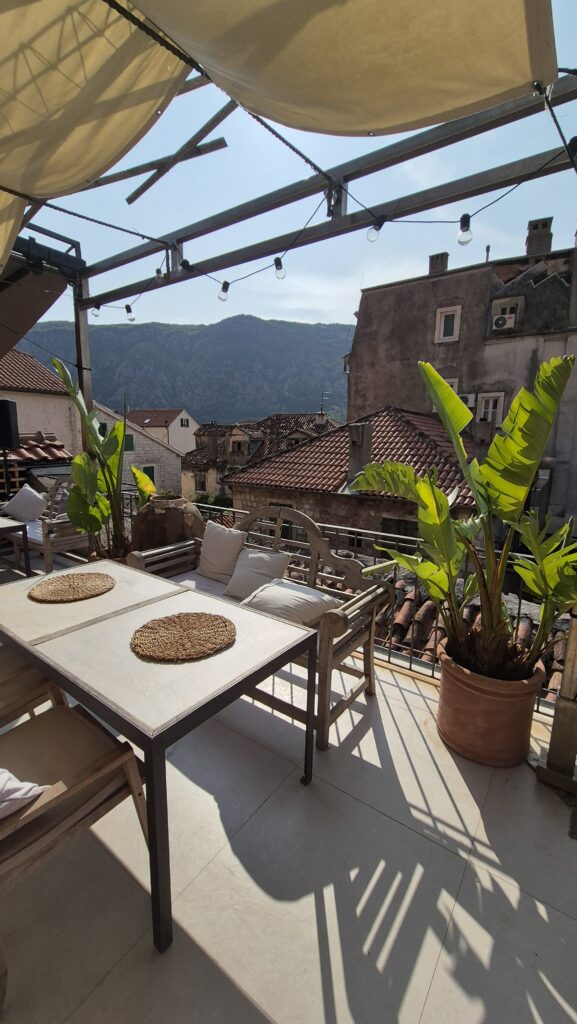

Parting image: slow evenings and the Adriatic hum
What I keep thinking about, weeks later, is the smallness of things that made the trip: an evening glass of local wine in a Budva lane as a church bell chimed; the bronze ballerina silhouetted against the splash of the sea; the feeling of climbing Kotor’s ancient steps and turning to see the bay unfold like a folded map smoothed out; the speedboat’s spray and the bright hush in Perast. Montenegro is compact enough that each experience feels like an event, short, intense, and perfectly framed for memory.
Montenegro was the last leg of our journey. We travelled around Albania for 10 wonderful days first and then transferred to Budva.